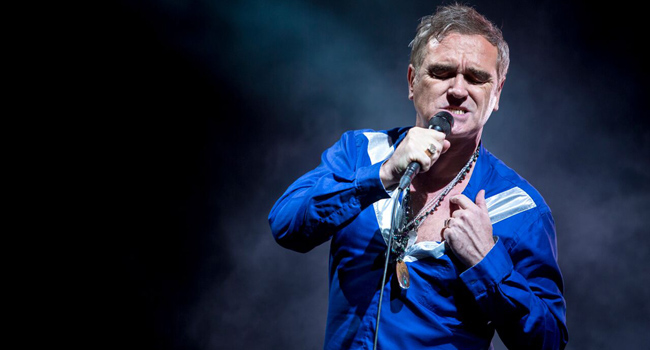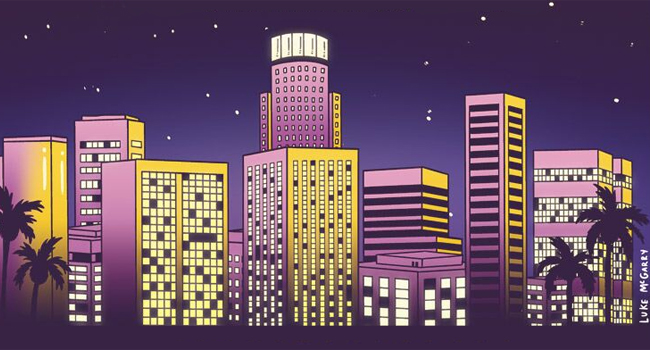I covered Lollapalooza a bit differently than the typical, straight journalistic fashion others might employ. Because Pop ‘stache thrives on a passion for music, I thought I’d remove my critic’s hat for a weekend and approach the festival like a fan. So I trudged through the dirt and the sun, and swarms of drunks, only spoiling myself with the added benefit of using the media tent as means of escaping the masses when I needed to—what can I say, I’m a fan, not a sadist.
The experience was unique for me for a number of reasons: for starters, I’ve been highly critical of Lollapalooza in the past, criticizing what I consider its blatant corporate leanings and sub-standard headliners. In fact, you could say I was downright condescending, even going so far as to chide those who genuinely enjoy the fest. (Coy terms like “Lollapaloozers” have been thrown around. Original, I know.)
But it wasn’t until it became apparent that I’d be covering the festival for Pop ‘stache that it dawned on me: my entire experience with Lollapalooza had been limited to a single day, in 2008, when Kanye West headlined. I’d never experienced the festival, proper. Clearly, I was in no place to call anyone a Lollapaloozer if I hadn’t even attended the festival myself.
So I took this opportunity in stride: I went all three days, stayed all day; I saw the bands I had legitimate interest in, as opposed to working on assignment; I used the porta-potties; I got the sunburn. I went in with as open of a mind as possible. I put my money where my mouth was.
For a different take on the festival, read Taylor Brennan’s recap.
Friday:
On day one, I got my bearings. I scoped out the festival grounds, trying to familiarize myself with the lay of the land. I also spent a good amount of time at the media tent, shamelessly helping myself to the bevy of free drinks and food. Before long, I realized I should probably catch a set or two.

Photo by Andy Keil
On my way to catch Le Butcherettes, I stopped by Foster The People—and by stopped by, I mean got entangled by a mass of people who had gathered for their 3 p.m. set. I had no choice but to check out a couple songs, which were definitely enjoyable. The crowd, however, seemed restless, at least from where I stood. People spoke aimlessly amongst themselves as the band jetted through their radio-friendly brand of indie pop. I thought about sticking around to hear “Pumped Up Kicks,” a really enjoyable tune, but when I realized that most people would also bail as soon as the song was played, I figured I’d beat the crowd.

Photo by Andy Keil
I arrived at Le Butcherettes, who started a bit late but had a rollicking set. Singer/guitarist Teri Gender Bender started the band in 2007 in her native Guadalajara as a conceptual riot grrrl band with a penchant for theatrics. Back in the day, she was known to utilize fake blood, flour, eggs and pig heads into the band’s live sets, meant to spark a comment on oppressed womanhood. Since then, her antics have somewhat cooled down, but the music hasn’t. Wearing a dress covered in fake blood, Ms. Bender caterwauled and scissor kicked across the stage, often missing notes and ham-fisting some chords while she played, but none of it mattered: her frenetic presence and disregard for her own safety (she banged her forehead on the microphone as much as she sang into it) is a sight to behold. The rest of the band was great, too—drummer Gabe Serbian succeeded in matching Bender’s energy, to the point that he vomited all over the stage as the band concluded their set (an act that, as the weekend unfolded, would become a trend). Overall, Le Butcherettes played a thunderous set that left the meager but attentive crowd dizzied. It was a perfect way to kick off the weekend.
Afterwards, I caught the tail end of Smith Westerns, which was fine. As I worked my way through the crowd, much of the talk was geared toward sharing personal anecdotes of times people had “partied with these dudes,” like it was a point of pride, despite the fact that everyone and their uncle has “partied with those dudes.” Smith Westerns are a talented band and their music is really good, but the mythical presence they have over the hipsters of Chicago gets a bit grating. Things got annoying fast, and I’m glad I was only there for 15 minutes.
The next band on my schedule was The Mountain Goats, a band I’ve really liked for a long time but whose recent output has been something of a disappointment. They played the songs I knew they would, including “No Children,” and the closer “This Year,” which featured accompaniment from Wye Oak’s Jenn Wasner—both were great. But the band—led by mastermind John Darnielle—managed to touch on a number of songs from their extensive catalogue, including album cuts like “Palmcorder Yanja” and “Wild Sage.” Darnielle even went solo for a bit, playing a new track titled “You Were Cool.” For a band that has become a creature of habit, the set was surprisingly eclectic.

Photo by Andy Keil
As soon as The Mountain Goats finished, Bright Eyes took the Bud Light main stage. Having been a huge fan of Connor Oberst in high school, my nostalgia factor was in high gear and I was pleased when most of the band’s set comprised songs from 2005’s I’m Wide Awake, It’s Morning. Oberst clearly still has a zeal for these songs, injecting them with broader instrumentation for the live set, most notably an extended horn outro on the maudlin “Lover I Don’t Have to Love” and a fuller rhythm section for “Landlocked Blues.” Sometimes, though, these reconfigurations proved arbitrary, with some songs featuring two drummers for reasons I couldn’t gleam. But I was delighted to see Oberst was mostly still his angsty self, dedicating the song “Shell Games” to “all the phonies in the audience.” I don’t think Oberst will never not look or sound like a 16-year-old, but for the hour he was on stage, it seemed to work.

Photo by Cambria Harkey
I readied my nostalgia factor yet again for Coldplay, one of Friday’s headlining acts that followed Bright Eyes on the Bud Light stage. I, of course, was at one point a huge fan of Coldplay, but like the rest of the world’s decent human beings, it all became too much for me. Still, I knew the band’s live show tended to be something of a spectacle, and indeed it was: the show started with fireworks and lasers and the theme from “Back to the Future” and I was admittedly blown away by the theatricality of it all. The band doled out some early hits (“Yellow,” “In My Place”) and kept things moving at a brisk pace, but I couldn’t help but feel myself getting antsy. Grandiose stage productions aside, the band wasn’t doing anything particularly engaging. They were simply going through the motions, After “The Scientist,” I officially lost interest.
Prior to the Coldplay set, I had nearly resolved to see Ratatat’s play instead. I wish I had stuck with that inclination, because as I wandered over to the Google+ stage—a decidedly smaller stage shrouded by dozens of trees and tucked away from the rest of the fest—it became clear that I had messed up by not catching their whole set.
I won’t consider it much of a spoiler when I saw that, even though I missed the first 20 minutes or so, Ratatat’s set was the best I saw all weekend.
The setting was perfect: Thanks to the surrounding trees, the stage was extra dark, which bolstered the band’s remarkable stage production, fitted with high definition screens displaying trippy imagery. Musically, the band was on-point. Due to the nature of their sound, they were able to transition between songs with tremendous ease, turning the whole thing into an extended jam session that rarely let up. And, even though I was stationed toward the back of the crowd, few people were standing still. The groove was just too good. Perfect way to end the day.



